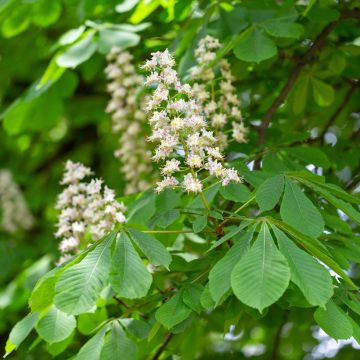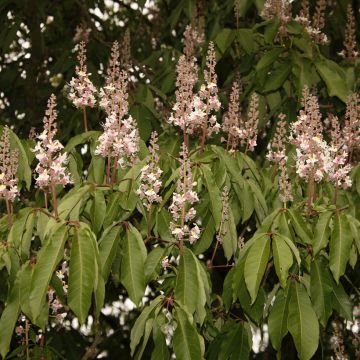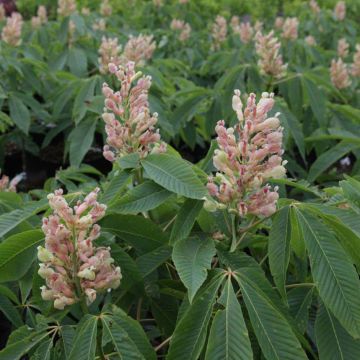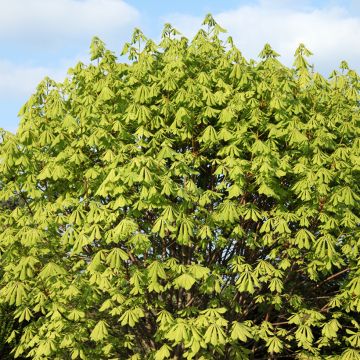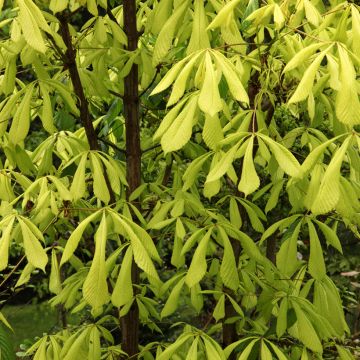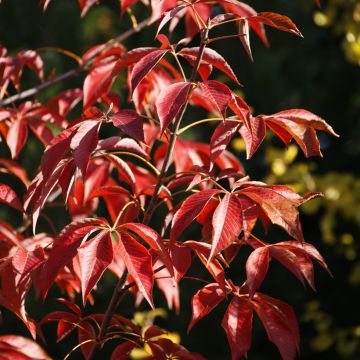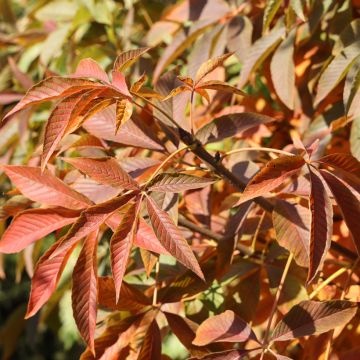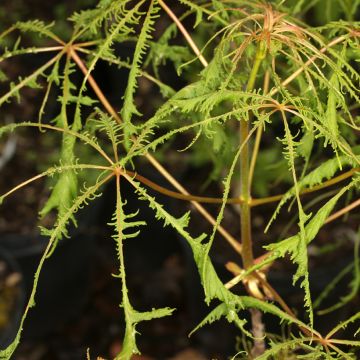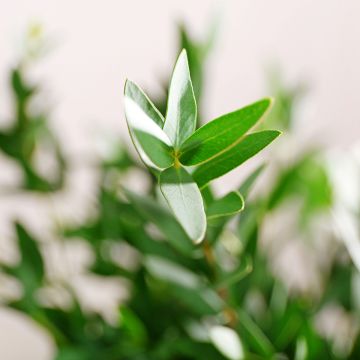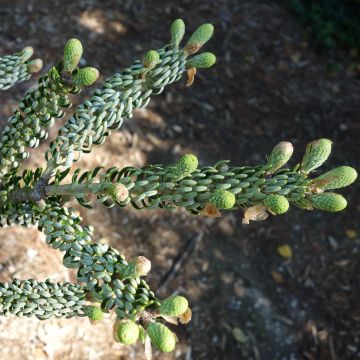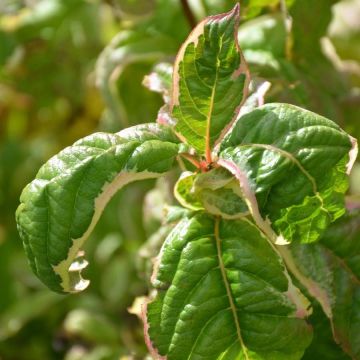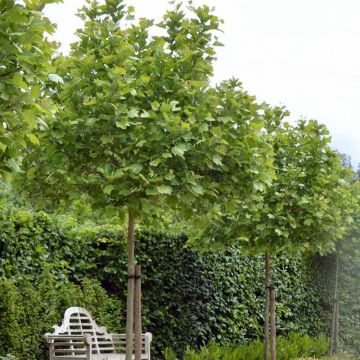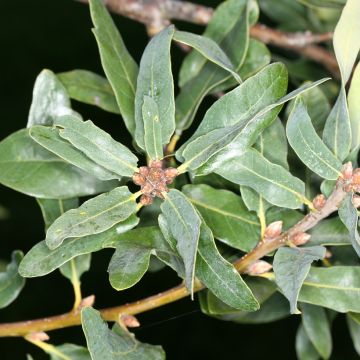

Aesculus hippocastanum Wisselink


Aesculus hippocastanum Wisselink
Aesculus hippocastanum Wisselink
Aesculus hippocastanum Wisselink
Horse Chestnut, Conker Tree
Special offer!
Receive a €20 voucher for any order over €90 (excluding delivery costs, credit notes, and plastic-free options)!
1- Add your favorite plants to your cart.
2- Once you have reached €90, confirm your order (you can even choose the delivery date!).
3- As soon as your order is shipped, you will receive an email containing your voucher code, valid for 3 months (90 days).
Your voucher is unique and can only be used once, for any order with a minimum value of €20, excluding delivery costs.
Can be combined with other current offers, non-divisible and non-refundable.
Why not try an alternative variety in stock?
View all →This plant carries a 24 months recovery warranty
More information
We guarantee the quality of our plants for a full growing cycle, and will replace at our expense any plant that fails to recover under normal climatic and planting conditions.
Would this plant suit my garden?
Set up your Plantfit profile →
Description
Aesculus hippocastanum 'Wisselink' has one of the most beautiful foliage ever seen in horse chestnuts. In spring, 'Wisselink' presents a very pale foliage, creamy green with silver reflections veined with dark green. A magnificent reticulated pattern that fades throughout the season, while the summer yellow appears. This variety also charms with its pretty clusters of white flowers. A deciduous small tree to be highlighted, for example against a dark background of conifers that would provide the shade it needs.
Aesculus hippocastaneum 'Wisselink' was discovered by William Wisselink in the Netherlands. This small tree belongs to the Sapindaceae family, formerly the Hippocastanaceae family. The species, contrary to what its common name of Horse Chestnut suggests, is native to Macedonia, a region that includes northern Greece, Albania, and southern Bulgaria. It is a forest species. In nature, the common horse chestnut can reach a height of 25 m with a spread of 15 to 20 m.
The 'Wisselink' horse chestnut grows slowly, but eventually reaches a height of about 15 m with a spread of approximately 12 m. Its trunk and branches are covered with a brown to reddish, initially smooth bark, becoming grey and fissured with age. The crown is dense and broadly conical. The deciduous foliage forms in spring and falls in autumn. In winter, large reddish buds covered with a shiny resin can be seen on the branches. The foliage consists of large leaves divided into 5 to 7 leaflets with finely toothed edges, strongly veined with dark green. Their colour changes from spring to summer. Flowering occurs in May-June, on already leafy branches. It takes the form of upright pyramidal clusters called panicles, 15-20 cm long, composed of numerous small flowers about 1 cm wide, which are close to white. After pollination by insects, the characteristic green, rounded, and bristly fruits form. Each fruit can measure up to 4 cm in diameter and contains only one large seed.
The 'Wisselink' Horse Chestnut stands out as a specimen tree in a park or large garden. As its magnificent foliage is sensitive to scorching sun, it is best placed in an east-facing position or near a tree like the Henry's lime that will provide shade in the afternoon during summer. To not overshadow its unique beauty, it is best to avoid associating it with flowering shrubs or variegated foliage. However, Japanese forest grass or black Ophiopogon, for example, can be planted at its base.
Report an error about the product description
Plant habit
Flowering
Foliage
Botanical data
Aesculus
hippocastanum
Wisselink
Sapindaceae
Horse Chestnut, Conker Tree
Cultivar or hybrid
Other Aesculus - Horse Chestnut
View all →Planting and care
The 'Wisselink' Horse Chestnut is best planted in spring or autumn in deep soil, preferably quite rich, slightly acidic, neutral or slightly chalky, not drying out too much in summer. Plant it in a semi-shaded position, in a clear location so that it can be seen. Its foliage dislikes the scorching afternoon sun, especially in hot regions. Water and mulch to keep the soil moist for the young plants. Once well rooted, it will generally be satisfied with rainwater.
To limit attacks from pests (rarely fatal), collect the leaves in autumn and get rid of them. Trapping male butterflies using a pheromone trap (funnel traps) limits the attacks.
Planting period
Intended location
Care
This item has not been reviewed yet - be the first to leave a review about it.
Similar products
Haven't found what you were looking for?
Hardiness is the lowest winter temperature a plant can endure without suffering serious damage or even dying. However, hardiness is affected by location (a sheltered area, such as a patio), protection (winter cover) and soil type (hardiness is improved by well-drained soil).

Photo Sharing Terms & Conditions
In order to encourage gardeners to interact and share their experiences, Promesse de fleurs offers various media enabling content to be uploaded onto its Site - in particular via the ‘Photo sharing’ module.
The User agrees to refrain from:
- Posting any content that is illegal, prejudicial, insulting, racist, inciteful to hatred, revisionist, contrary to public decency, that infringes on privacy or on the privacy rights of third parties, in particular the publicity rights of persons and goods, intellectual property rights, or the right to privacy.
- Submitting content on behalf of a third party;
- Impersonate the identity of a third party and/or publish any personal information about a third party;
In general, the User undertakes to refrain from any unethical behaviour.
All Content (in particular text, comments, files, images, photos, videos, creative works, etc.), which may be subject to property or intellectual property rights, image or other private rights, shall remain the property of the User, subject to the limited rights granted by the terms of the licence granted by Promesse de fleurs as stated below. Users are at liberty to publish or not to publish such Content on the Site, notably via the ‘Photo Sharing’ facility, and accept that this Content shall be made public and freely accessible, notably on the Internet.
Users further acknowledge, undertake to have ,and guarantee that they hold all necessary rights and permissions to publish such material on the Site, in particular with regard to the legislation in force pertaining to any privacy, property, intellectual property, image, or contractual rights, or rights of any other nature. By publishing such Content on the Site, Users acknowledge accepting full liability as publishers of the Content within the meaning of the law, and grant Promesse de fleurs, free of charge, an inclusive, worldwide licence for the said Content for the entire duration of its publication, including all reproduction, representation, up/downloading, displaying, performing, transmission, and storage rights.
Users also grant permission for their name to be linked to the Content and accept that this link may not always be made available.
By engaging in posting material, Users consent to their Content becoming automatically accessible on the Internet, in particular on other sites and/or blogs and/or web pages of the Promesse de fleurs site, including in particular social pages and the Promesse de fleurs catalogue.
Users may secure the removal of entrusted content free of charge by issuing a simple request via our contact form.
The flowering period indicated on our website applies to countries and regions located in USDA zone 8 (France, the United Kingdom, Ireland, the Netherlands, etc.)
It will vary according to where you live:
- In zones 9 to 10 (Italy, Spain, Greece, etc.), flowering will occur about 2 to 4 weeks earlier.
- In zones 6 to 7 (Germany, Poland, Slovenia, and lower mountainous regions), flowering will be delayed by 2 to 3 weeks.
- In zone 5 (Central Europe, Scandinavia), blooming will be delayed by 3 to 5 weeks.
In temperate climates, pruning of spring-flowering shrubs (forsythia, spireas, etc.) should be done just after flowering.
Pruning of summer-flowering shrubs (Indian Lilac, Perovskia, etc.) can be done in winter or spring.
In cold regions as well as with frost-sensitive plants, avoid pruning too early when severe frosts may still occur.
The planting period indicated on our website applies to countries and regions located in USDA zone 8 (France, United Kingdom, Ireland, Netherlands).
It will vary according to where you live:
- In Mediterranean zones (Marseille, Madrid, Milan, etc.), autumn and winter are the best planting periods.
- In continental zones (Strasbourg, Munich, Vienna, etc.), delay planting by 2 to 3 weeks in spring and bring it forward by 2 to 4 weeks in autumn.
- In mountainous regions (the Alps, Pyrenees, Carpathians, etc.), it is best to plant in late spring (May-June) or late summer (August-September).
The harvesting period indicated on our website applies to countries and regions in USDA zone 8 (France, England, Ireland, the Netherlands).
In colder areas (Scandinavia, Poland, Austria...) fruit and vegetable harvests are likely to be delayed by 3-4 weeks.
In warmer areas (Italy, Spain, Greece, etc.), harvesting will probably take place earlier, depending on weather conditions.
The sowing periods indicated on our website apply to countries and regions within USDA Zone 8 (France, UK, Ireland, Netherlands).
In colder areas (Scandinavia, Poland, Austria...), delay any outdoor sowing by 3-4 weeks, or sow under glass.
In warmer climes (Italy, Spain, Greece, etc.), bring outdoor sowing forward by a few weeks.































